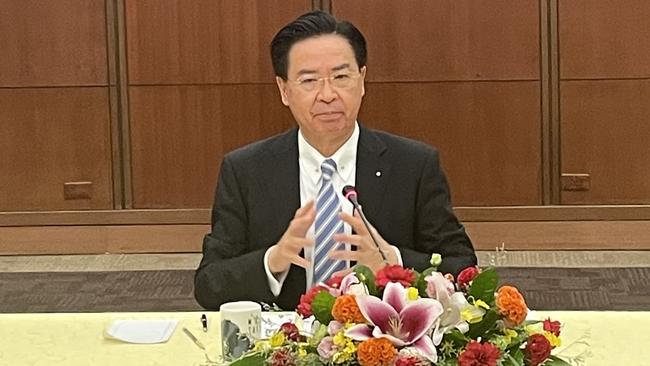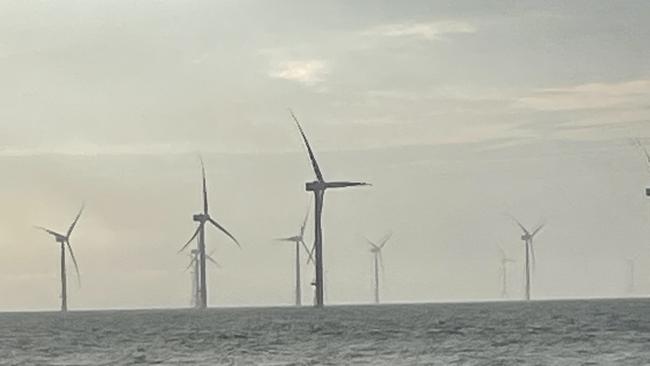Taiwan keen for hydrogen from Australian energy hub
Australia has the potential to be an energy hub in Asia, say Taiwanese political leaders who want to follow Japan’s lead and import hydrogen for industry and transport.
Taiwan plans to follow Japan in importing Australian hydrogen as it boosts its energy resilience in the face of growing threats from China.
Taiwan Deputy Foreign Minister Chung-Kwang Tien told a delegation of foreign journalists in Taipei last week that Australia had the potential to be an energy hub for the region and play a part in the island nation’s shift to renewable energy.
“Taiwan is a high-tech export hub but Australia has the potential to become an energy hub of the future using hydrogen produced by solar power and other sources,” Mr Tien said.
Taiwan Foreign Minister Joseph Wu told the same group of journalists that China was increasingly active in the South Pacific, requiring a united response from Australia and other democracies.
Australia is already Taiwan’s largest supplier of LNG, making up 32 percent of long-term contracts.
A Taiwan government spokesman said officials had attended briefings with the Federal and Queensland government last year about exporting hydrogen for use in its industry.
Mining magnate Andrew ‘Twiggy’ Forrest is building a giant green hydrogen manufacturing facility in Gladstone that aims to produce 15 million tonnes of hydrogen by 2030.
Mr Tien said Japan had provided the model on how Australian hydrogen could be exported for use in industry and transport.

Hydrogen shipments from Australia to Japan could eventually rival the post-war boom in coal trade between the two countries, Japanese ambassador Shingo Yamagami said last year.
Mr Yamagami said Australia was set to become a major source of hydrogen for Japan as it moved to a carbon-neutral economy by 2050.
Japan and Taiwan’s move to shore-up Australia as a secure source of renewable energy comes amid threats posed by an increasingly “assertive” China in Asia.
The 2011 Fukushima nuclear disaster also made Japan more reliant on imports of fossil fuels such as oil, gas and coal. Taiwan, which is located in the same earthquake prone zone, plans to shut its remaining nuclear plants by 2025.
Taiwan Environment Minister Tzi-Chin Chang said the island did not have enough space to store nuclear waste.
Taiwan, like Japan, is pursuing aggressive renewable targets, announcing last year it aims to have zero carbon emissions by 2050.
The government-backed Taiwan Industrial Technology Research Institute also is working on “virtual power plants” that would manage grid demand as it increased the mix of renewables in the energy mix.

Taiwan also is building its renewable capacity with the help of Australian investors. South of Taipei in Miaoli County, the giant Formosa Wind Farm includes more than 20 turbines located in the coastal waters of the Taiwan Straits. Australian investment bank Macquarie was one of the early investors in Taiwan’s first wind farm and is now looking at funding further wind farm projects in the area. Taiwan aims to power 2m homes from the project.
Both nations last year launched the Australia-Taiwan Hydrogen Trade and Investment Dialogue to discuss opportunities for “priority low emissions technologies such as hydrogen”. Australia is Taiwan’s number one supplier of energy and Taiwan is Australia’s fourth largest energy and resources export market.
“Australia and Taiwan are natural energy partners and are in a strong position to maximise these opportunities as the world moves towards a net zero emissions future, based on our long history of successful energy and resources trade and investment co-operation,” a joint statement from the dialogue said.
“The development and deployment of low emissions technologies will be critical to reducing emissions and creating new economic opportunities. They will also provide enormous opportunities for Australia and Taiwan to deepen our trade and investment co-operation, including in wind and solar, and in emerging low emissions technologies such as hydrogen.”
The writer visited Taiwan courtesy of the Ministry of Foreign Affairs Republic of China (Taiwan)




To join the conversation, please log in. Don't have an account? Register
Join the conversation, you are commenting as Logout